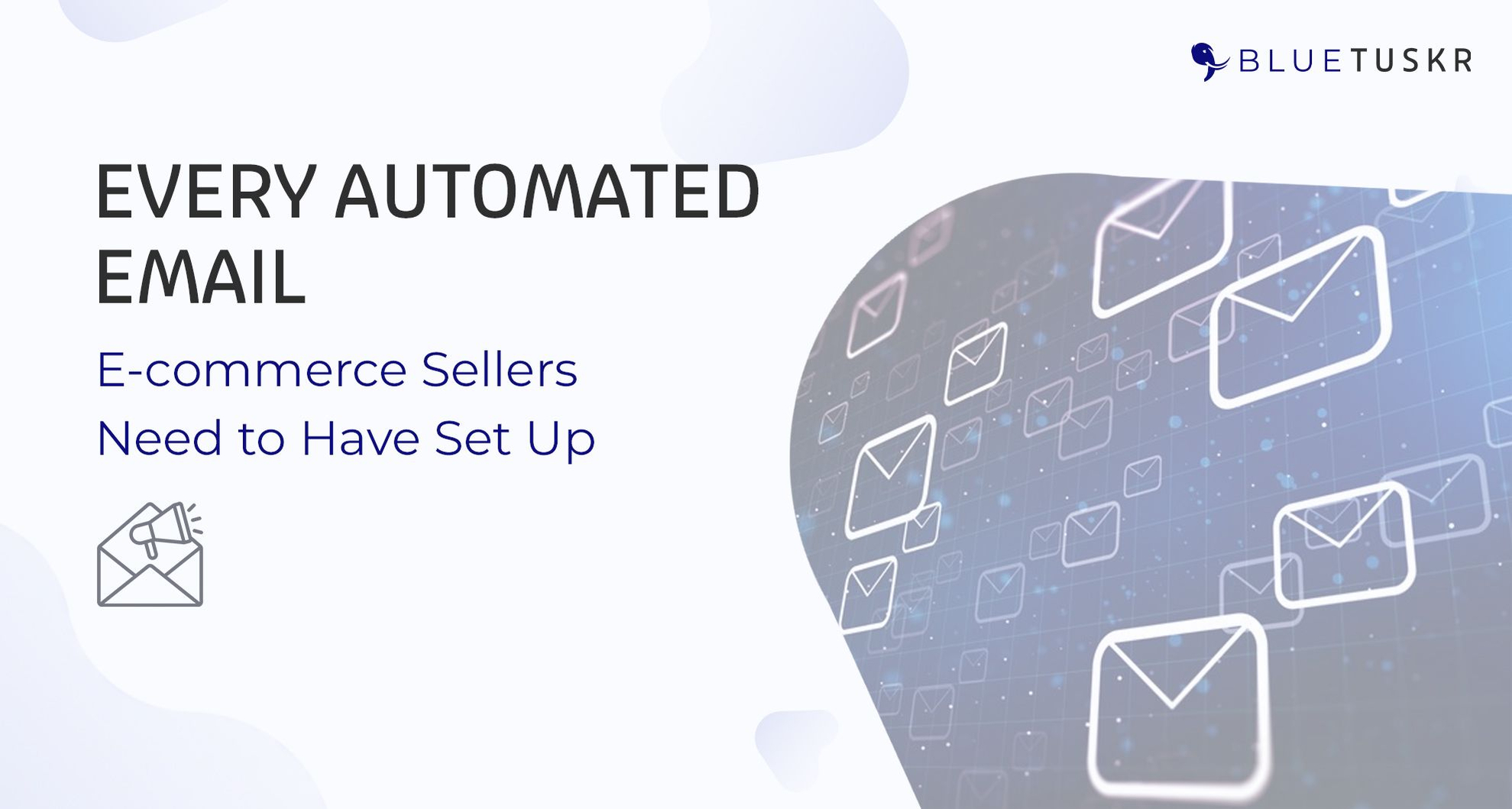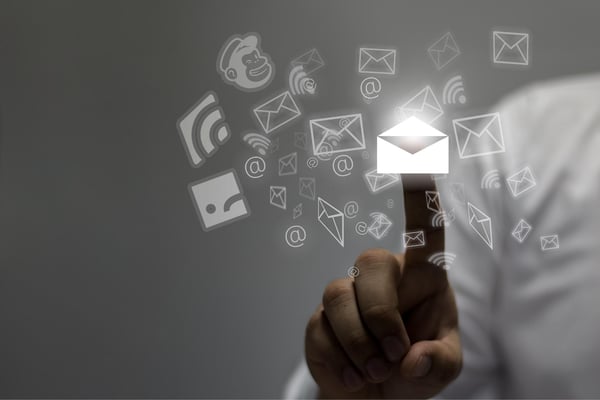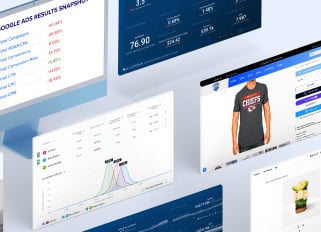
Every Automated Email E-commerce Sellers Need to Have Set Up - Updated 2023
E-commerce automated emails are a powerful tool for sellers. They allow you to capitalize on critical moments, ensuring you send just the right message to the ideal prospective, current, or past customer at the exact right time.
But they can only boost sales, bolster your brand, and drive interest if you use them properly. Having the right set of automated emails is vital to your success. If you are wondering which ones you need to have ready and raring to go, here’s what you need to know.

What Are E-commerce Automated Emails?
In the most basic sense, email automation is the process of creating messages that aren’t intended for immediate release and, instead, get sent out at specific moments. Usually, that moment is defined by a trigger.
A trigger could be an action on the customer’s part, based on a certain amount of time passing, or several other events. The key is, once that moment happens, the pre-defined email heads out to the customer’s inbox all on its own.
The Benefits of E-commerce Automated Emails
Before digging into the kinds of automated emails e-commerce sellers need to use, it’s important to understand why email marketing and automation are good ideas overall. First, approximately 4 billion people use email. That’s getting close to half of the world’s 7.67 billion person population and includes nearly every person with internet access. And, while not all of them are potential customers, a surprising number may be.
Second, you can’t ignore the ROI. Email marketing can bring in $42 for every $1 spent. That’s an ROI of 4200 percent, which makes it a path worth pursuing.
Additionally, email marketing is a versatile tool. You can use it for lead generation, boosting sales, nurturing leads, and enhancing customer retention. However, you can only achieve all of that if you use email properly.
With e-commerce automated emails, moving prospective customers through your sales funnel becomes easier. Additionally, you can continue to cultivate relationships over time, driving interest, and building loyalty.
While many companies are adept at sending their regular promotional emails, such as weekly sales flyers, they often miss other critical communication opportunities. Why does that matter? Because it means missing out on potential business.
E-commerce automated emails can make capturing those opportunities a breeze. With an ideal email automation provider by your side and the right activity triggers, you can connect with prospective, current, and past customers at the perfect moment. That’s why it’s so powerful, and something that all e-commerce sellers can’t afford to ignore.

Choosing E-commerce Email Automation Software
E-commerce email automation software allows you to simplify your communications. These solutions have built-in tools designed specifically with e-commerce sellers’ needs in mind, making it easier to craft the messages and identify the right triggers.
As with all kinds of business solutions, not all e-commerce email automation software options are created equal. Finding the right one for your needs is a must, but can also be ridiculously time-consuming if you don’t know where to look. Luckily, a few providers stand out from the pack.
Klaviyo
Klaviyo is a great option if you need a robust e-commerce automated email solution. It allows your e-commerce business to remain customer-centric while ensuring scalability. You can craft a variety of automated messages, select e-commerce-specific triggers (as well as universal ones), and monitor your campaign results and revenue generation with ease. Plus, it’s user-friendly and includes cutting-edge features, including e-commerce platform integrations.
As a bonus, Klaviyo also offers e-commerce SMS marketing tools. That allows you to centralize many of your marketing activities, making it a convenient solution.
Mailchimp
Mailchimp also has solid email automation features. Additionally, it’s known for being user-friendly, which is excellent for those new to these kinds of solutions. There are several convenient platform integrations, including Slack, Canva, and Zapier, as well as digital ad building tools.
However, Mailchimp doesn’t offer SMS marketing directly, nor does it integrate with Shopify. Instead, you have to integrate with another provider, which isn’t as convenient.
Omnisend
Omnisend is another solution with quite a bit to offer. The platform has great automation workflow options, SMS capabilities, and e-commerce platform integration features. Plus, the available templates make it easy to get started, which may be ideal for those initially diving into the email marketing world.
Must-Have E-commerce Automated Emails
1. Welcome Series
When anyone joins your email list, sending a welcome email right away is a must. It sets the stage and lets you nurture the relationship from the beginning, while also tapping into a moment when potential customers are genuinely engaged.
However, you don’t want to stop there. Instead, you may want to create a series to move that prospective buyer through the funnel. For example, you may offer a first-purchase incentive, give them an overview of what future communications are coming their way, and introduce your social media channels.
2. Abandoned Cart
Did you know that 81.4 percent of online shopping carts end up abandoned? It’s true. Additionally, that represents an astonishing $4 trillion in lost revenue. But around 63 percent of that could be recaptured.
With abandoned cart e-commerce automated emails, you can reconnect with prospective customers who pushed the pause button on a purchase. That could lead a portion of them to rethink their decision to walk away, effectively turning their initial “no” into a “yes.”
If you deploy an abandoned cart email series, you may reach even more of those lost opportunities. As long as you aren’t overly aggressive, it can be effective.
Usually, the first message in the series would simply remind the shopper what they decided to leave behind. Extoll the virtues of their original product or service choices, and include a quick link that brings them right back to the cart.
If your follow up with a second email, address any common points of hesitation customers may experience. Wait until the third message to offer a discount or bonus – like a free gift – for going through with the purchase, if you plan on making one available.

3. New Customer
When someone makes their first purchase, you have an opportunity to turn a one-time buyer into a repeat customer. By cultivating that relationship and showcasing your appreciation, you can build loyalty while enhancing your brand.
Along with an immediate welcome or thank you email, plan to send a check-in email in the next few days. Let them know where they can turn if they have questions while waiting for a product to arrive and encourage them to reach out if they need assistance.
After that, send a follow-up message a few days after the product’s arrival. You can ask if the item was received and let them know what to do if they experienced an issue. Then, about a week later, make a product review request. Finally, follow that up in about a week with a time-sensitive, targeted promotion series.
4. Repeat Customer
Repeat customers shouldn’t receive the same email series as first-time buyers. They already have a reasonably strong relationship with your company, and that means you need a new focus.
Your first check-in can occur after the product arrives, allowing you to touch base on that experience. You may also want to solicit a review at that time or do so in the second follow-up message. The email after that should focus on personalized recommendations, as you may have enough data to curate a list of products that may be of interest.
5. Educational Messages
Not all e-commerce automated emails should be sales-oriented. By offering relevant educational content, you can enhance relationships and build a rapport.
For example, if a product the person purchases has a learning curve, then create an email series that gives them helpful information, allowing them to make the most of their new item. You could also share maintenance tips, creative use ideas, or answers to FAQs.
6. Re-engagement
Not all of your prospective, current, or past customers are going to stay engaged long-term. With re-engagement emails, you have a chance to win them back, while also doing more.
Usually, you’ll want to start with a basic reminder, letting them know it’s been a while since they’ve opened your emails. Next, send a standout offer specifically designed to capture their interest. Finally, let them know that they’ll be automatically unsubscribed if they don’t engage. If they don’t, then remove them from your list.
Not only could this help you get some customers back, but it also helps you clean up your email list. And, since automatic deletions of your emails could lead the messages to be mislabeled as spam, even the latter is a good thing.
7. Transactional
This includes all of the basic emails a customer would expect to get from you like Order Confirmation, Shipment Confirmation, Shipment Out For Delivery, Shipment Delivered, Refund Request, Order Cancelled, etc.
Although these may come standard on most shopping carts, it’s always good to not only make sure they are all functional, but also to make sure they are all well-branded and and worded with your brand voice.
Interested in e-commerce email marketing services? Contact our team at Bluetuskr, an e-commerce marketing agency.
Connect With Us
Recent Post

.png)












Tell us what you think!